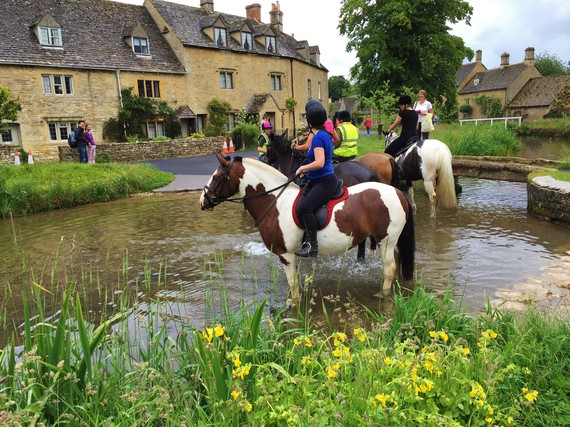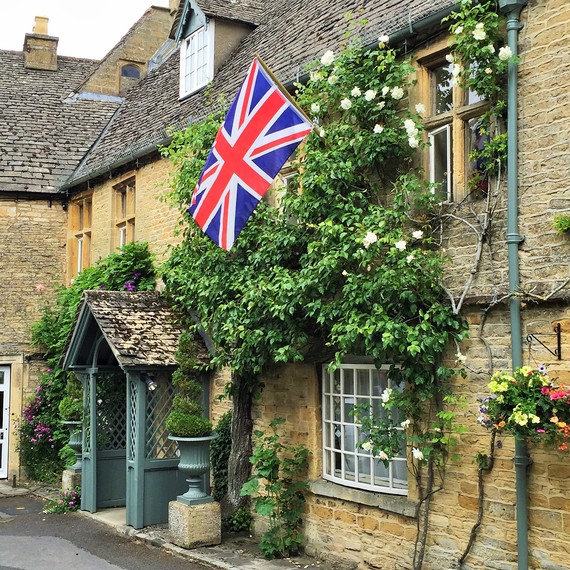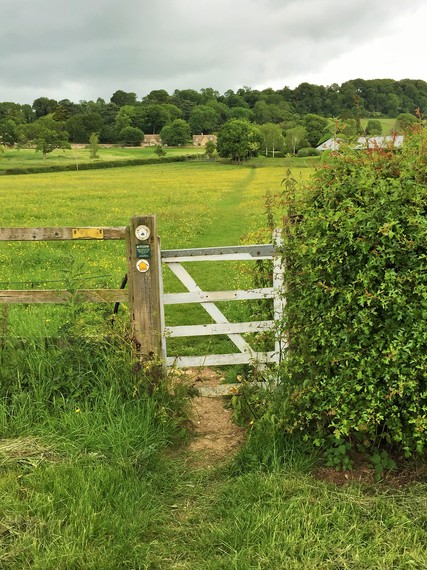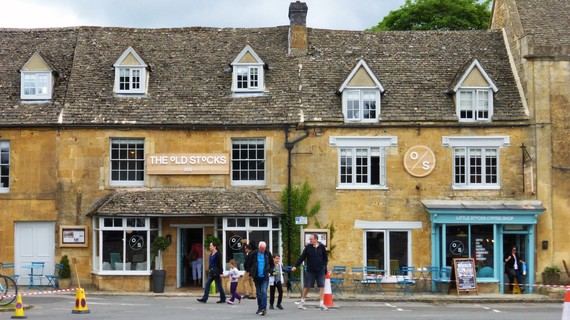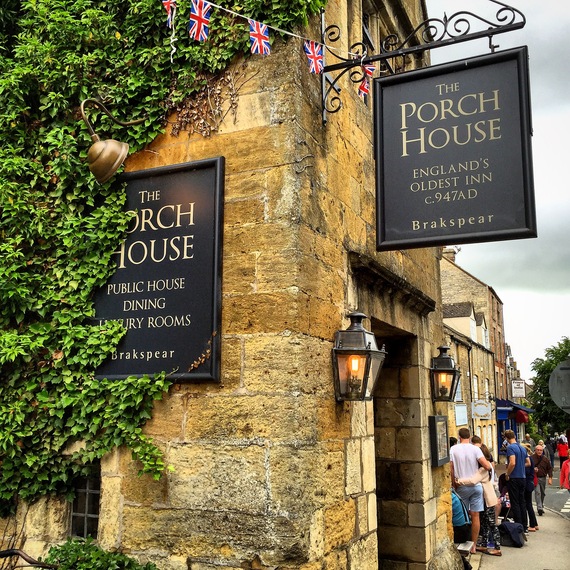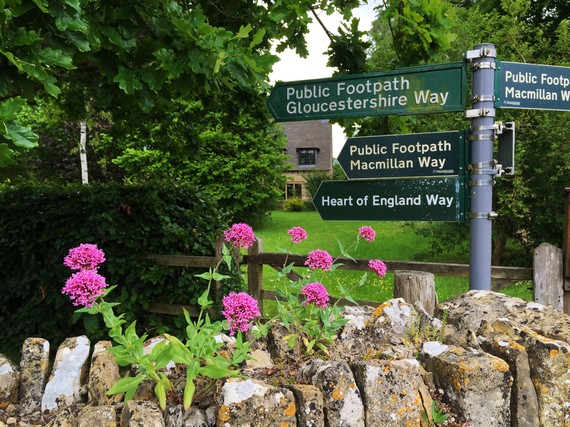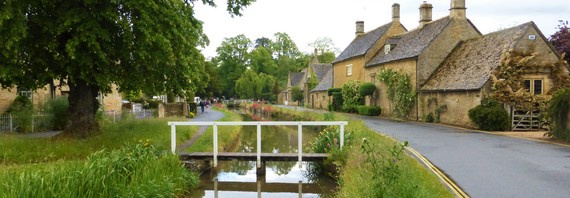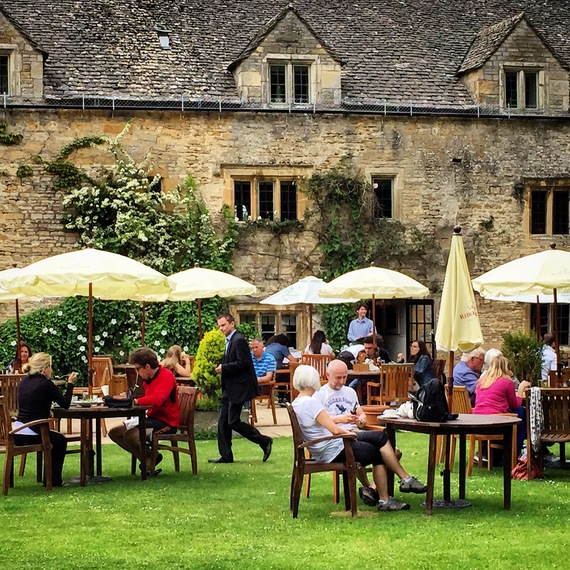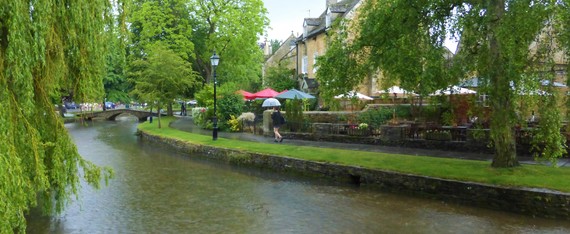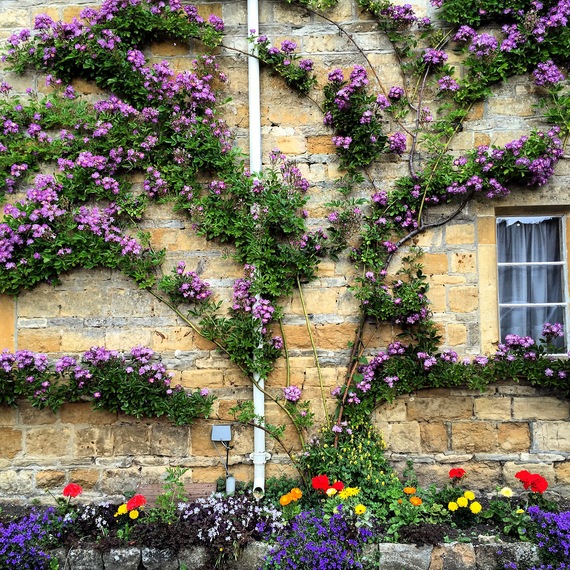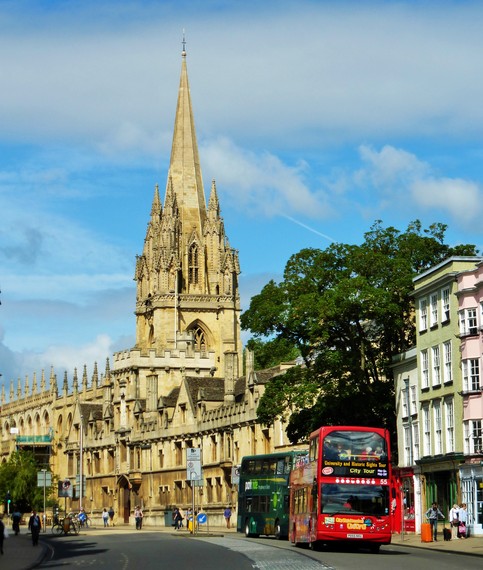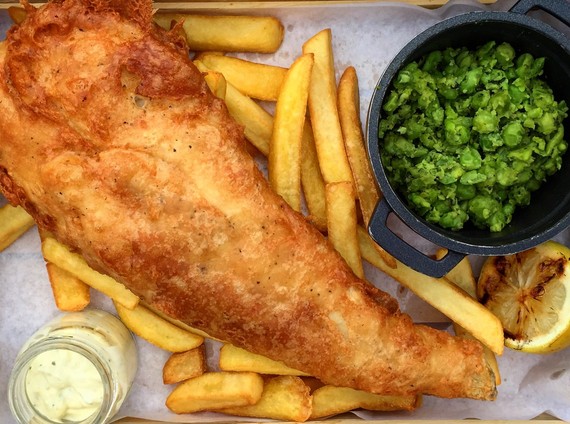How to Escape London and See
the Cotswolds - the England of Calendars and Picture Books
London is magnificent, but it can also be big, noisy and crowded with swarms of international tourists following guides holding up umbrellas. If you want to see the real England - or at least, the Harry Potter fantasy version of what Shakespeare called "this green and pleasant land," you need to get to the Cotswolds.
This postcard-pretty rural area of rolling green hills and honey-colored stone villages lies just 60 miles from Big Ben, but is a world away in atmosphere. Public footpaths meander over stone walls through fields of contented sheep. Lazy rivers with names like Windrush flow past country pubs with wood smoke curling from the chimney. Of course, there are tour buses here, too. But the great thing about the Cotswolds is, if you leave the town square on foot, the village soon turns to countryside, and you'll have the countryside all to yourself. Small wonder that Madonna, Kate Moss, Hugh Grant, Elizabeth Hurley, Patrick Stewart ...and of course, Harry Potter author J.K. Rowling - all call the Cotswolds home.
And you can too, on an easy day break from London. Here's how you do it.
Rambling in the Cotswolds
Leave your bags at your London hotel, throw just the bare essentials in a backpack, wear your best walking shoes, buy a "day return ticket" and catch the train at Paddington Station for Moreton-in-Marsh. Just 90 minutes away, Moreton has been welcoming travelers to the Cotswolds for 1700 years.
"Cotswold" is a Saxon word for "hilly shelter for sheep." In the Middle Ages, Cotswold sheep were known throughout Europe for their heavy fleece and excellent wool. Some 20,000 sheep a day could be sold in a single Cotswold market town, and it was the wool industry that brought incredible wealth to the area, as indicated by the gated mansions, elaborate churches and wonderfully carved stone buildings along each town's main thoroughfare.
When wool was replaced by cotton and the industrial revolution, the sheep industry fell off. With limited rail connections, the Cotswolds became an isolated farm area, forgotten until the current age of tourism. Today, 85 percent of the land is still agricultural, but these picturesque limestone hills are also home to nearly 100 pretty villages of stone buildings, all bursting with tea shops, antique stores, inns and of course, pubs. The entire 2,250 square miles of the Cotswold Hills has been designated an Area of Outstanding National Beauty, sort of an English way of saying "it's pretty."
Moreton is worth a quick poke around and be sure to see The Bell Inn, which allegedly served as the inspiration for The Prancing Pony, the most famous pub in the Middle Earth of J R R Tolkien's "Lord of the Rings."
Then catch one of the hourly buses to Stow-on-the-Wold. Located just four miles away, Stow is one of England's best known market towns -- and one of the loveliest. At 800 feet elevation this is the highest of the Cotswold towns, which makes it a perfect walking center because all footpaths go downhill.
Stow is an ancient town. You can find Stone Age and Iron Age burial ruins nearby. Charles I stayed at the Kings Arms in 1645, just before the battle of Naseby. Charles lost the battle, and eventually his head, but don't be put off by that. Like him, you can still enjoy a pint at the Kings Arms. Or walk a few blocks to the Porch House, which has been an inn since 947 A.D., making it the oldest inn of England. Try the fish and chips and a Ploughman's lunch (ham, cheese, pickle and bread) and wash it down with a pint of local Brakspear bitter.
Stow's town square is a storybook village of flowers and handsome yellow-stone buildings from the 14th-16th century. A highlight of the square is the stock where in medieval days, transgressors where tied up and publicly humiliated as punishment. When tormenting people in stocks got boring, Stow also offered bear baiting, where wild dogs attack a chained bear. Time must have hung heavy before cable TV, and in the sleepy Cotswolds, Stow didn't even have running water until 1958.
The town square is enclosed by buildings because this is where sheep were brought to market. Narrow alleys leading into the square (one sheep wide) were built for the sheep, not humans, but you can squeeze through them to find backstreet pubs, tea shops and antique stores. Be sure to stop at the Information Center to pick up a map for a classic four-mile Cotswold walk (mostly downhill) from Stow to Burton-on-the-Water.
A Classic Cotswolds Ramble
The map will lead you to a cemetery near 15th century St. Edward's Church, then guide you to yellow arrows and signs indicating a well-marked Public Footpath.
There are 140,000 miles of historic Public Footpaths in England and Wales that permit you to walk across estates, past palaces, through working farms and across fields of sheep and cows. "Kissing gates," a sort of swinging gate that lets humans pass, but not animals, keeps everyone in their place. On this walk from the heights of Stow, you'll have sweeping views of the countryside, pass through several large farms, cross streams, hop over stone walls, pass a cricket field, and get a backdoor look at wonderful stone cottages.
Three miles brings you to the postcard pretty village of Lower Slaughter. Fortunately, "slaughter" here does not mean there are werewolves on the moors, but rather comes from Old English, meaning "muddy place." This is as quaint a village as you can find. There's an old mill standing beside the River Eye, which flows quietly through the center of town and is crossed by a series of small bridges. Stop for a pint at the Slaughters Country Inn at their lovely riverside outdoor beer garden. It's the perfect place to watch horseback riders cross the river and canter off on bridle paths.
The footpath continues another mile along the river, past a cricket field, to Burton- on-the-Water, perhaps the most touristy of the Cotswold villages, but with good reason - the town is simply gorgeous. The River Windrush flows quietly through the center of the village and is spanned by five elegant stone pedestrian bridges.
Swans and ducks swim in the stream and there are a number of pubs with pleasant outdoor patios overlooking the water. Try the Duke of Wellington or the Old Manse Hotel. There are tourist attractions here - a miniature model of the village, a model railroad and a motorcar museum -- and lots of shops, which of course also means, lots of tourists. But walk down a side street to admire the flowers and stone buildings, and you'll have the place to yourself. Plan on about 3-4 hours for the walk from Stow with sightseeing and stops.
Dinner in Oxford
Hourly buses make the 20-minute return trip from Burton to Moreton and the return train to London, the last bus leaving Burton about 7:30 p.m. However, rather than eat dinner in the country, another option is to leave Moreton by train in late afternoon and stop in Oxford enroute to London. The day return train ticket allows you to get on and off the train as much as you like, as long you're somewhere along the route.
The classic university town of Oxford is relatively compact and offers three fantastic pub options for dinner. From the station, it's an easy walk to the center of town, where pedestrian-friendly streets lead past one architectural gem to another, including Oxford Castle, Christ Church College (a film setting and inspiration for the dining hall in the Harry Potter films) and the famous punts on River Cherwell. There are Harry Potter tours of Oxford in the afternoon and ghost tours in the evening.
To visit three ultimate classic English pubs, try The Bear, Oxford's oldest and most charming pub, which dates to 1242. The walls are covered with 4,500 neckties and the pub has nooks and crannies and an outdoor beer garden.
The King's Arms dates to 1607 and was used regularly as a film location for the Inspector Morse mysteries. It specializes in elegant pub grub and is known for its steak and ale pie
The Eagle and Child is the youngest of the three, dating to only 1650, but has the most famous history. Not only did J.R.R. Tolkien write The Hobbit here, but it was also a favorite hangout for C.S. Lewis, who wrote Alice in Wonderland. Lewis was also a regular at the Lamb and Flag across the street, as was Tony Blair, when he was a student at Oxford.
When you've drunk enough history, there are two trains to London every hour, each taking just an hour for the journey.
IF YOU GO: Cotswolds. Unfortunately, buses do not operate in the Cotswolds on Sundays.
